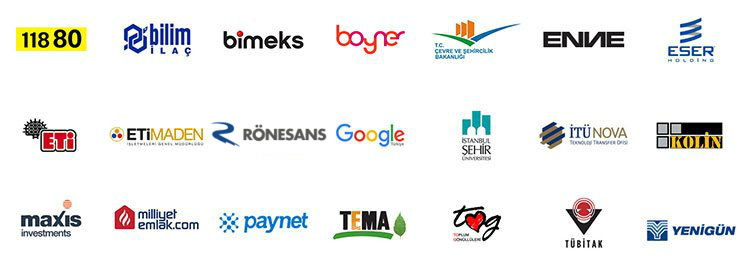
In today's business world, where digital transformation is reshaping every sector, choosing the right technology infrastructure can define the fine line between a company's success and failure.
At the heart of these strategic decisions lies the fundamental question of how software is procured and managed.
Two main protagonists dominate this long-standing debate: Software as a Service (SaaS) and the On-Premise models.
These two approaches represent not just where software is hosted, but entirely different business philosophies that fundamentally impact your cost, security, flexibility, and capacity for innovation.
This guide has been prepared to clarify the differences between these two models, move beyond clichés, and help you make the right decision for the unique needs of your business.
The Crossroads of Confusion: Which Model Is Right for Me?
Many business leaders and IT managers face this fundamental question when making a new enterprise software (ERP, CRM, etc.) investment.
The On-Premise model appears like a known and trusted fortress, offering full control over data and infrastructure.
On the other hand, the SaaS model shines as a modern and agile alternative, promising low initial costs, flexibility, and rapid deployment.
This situation leaves decision-makers in a dilemma.
On one side is the desire for data security and complete control; on the other is the need to reduce costs and scale quickly.
Choosing the wrong model is not just a financial mistake; it is a strategic error that can negatively impact the company's operational efficiency, competitive strength, and future growth potential for years to come.
The Hidden Truth: The Heavy Cost of the Wrong Choice
Although this decision may seem like a mere technical detail, its consequences affect the entire organization.
One of the biggest drawbacks of the traditional On-Premise model is the enormous, often overlooked, upfront investment and maintenance costs.
The purchase of servers, data center setup, licensing fees, cooling and energy expenses, and the salaries of expert IT staff to manage this infrastructure can drive the total cost of ownership (TCO) far beyond initial estimates.
Conversely, getting caught up in the allure of the SaaS model without strategic planning is equally dangerous.
If issues like data governance, security protocols, and integration with existing systems are not carefully addressed, businesses can find themselves in a quagmire of unexpected compliance issues and data chaos.
The market's direction provides very clear signals on this matter.
Analyses from leading research firms like Gartner show that enterprise software spending is rapidly shifting to the SaaS model. For example, it is predicted that by 2025, 85% of enterprise applications will be SaaS-based.
This statistic proves how strong the trend is towards avoiding the operational burden and costs of On-Premise infrastructure and moving towards the flexibility offered by the cloud. Staying outside of this trend creates an ever-increasing competitive disadvantage.
The Comprehensive Comparison: Finding the Best Path for Your Business
Making the right decision depends on a deep understanding of the advantages, disadvantages, and ideal use cases for both models. Here is a guide that examines these two worlds in all their aspects:
What Are the Key Differences Between SaaS and On-Premise?
At the most fundamental level, the difference lies in ownership and location.
- On-Premise: The software is hosted on the company's own servers, in its own data center. The company purchases the software license and is responsible for all aspects of infrastructure management (maintenance, updates, security).
- SaaS (Software as a Service): The software is hosted on the service provider's cloud infrastructure. The company accesses the software via a web browser, typically by paying a monthly or annual subscription fee. All infrastructure management is handled by the service provider.
Cost Structure and Total Cost of Ownership (TCO)
This is one of the most significant differences between the two models and often the factor that most influences the decision-making process.
- On-Premise: Requires a high initial capital expenditure (CapEx). A large upfront investment is made for servers, network hardware, software licenses, and installation. In addition, there are ongoing operating expenses (OpEx) such as personnel, energy, cooling, and periodic maintenance.
- SaaS: Offers a low initial cost and converts expenditures into a predictable operating expense (OpEx). There is no hardware or infrastructure investment; only the subscription fee is paid. This model is particularly attractive for SMEs and startups that want to invest their capital in other areas.
Security and Control
Data security is the highest priority, especially for industries that work with sensitive information.
- On-Premise: Provides absolute control over data and infrastructure. The company manages the entire process by establishing its own security protocols, access controls, and firewalls. This can be critical for organizations seeking full compliance with strict regulations (like GDPR, HIPAA, etc.).
- SaaS: Security responsibility is shared with the service provider. Leading SaaS providers invest millions of dollars in advanced security infrastructures, cybersecurity experts, and disaster recovery plans that a single company often cannot afford. However, this model requires entrusting your data to a third party.
Scalability and Flexibility
Businesses grow, shrink, or experience seasonal fluctuations. The speed at which the software infrastructure can adapt to these changes is vital.
- On-Premise: Scaling is slow, costly, and complex. Increasing the number of users or needing more processing power requires purchasing, installing, and configuring new servers. This process can take weeks or months.
- SaaS: Offers almost instantaneous scalability. You can increase or decrease the number of users with a few clicks, or immediately gain additional capacity and new features by upgrading to a higher subscription plan. This flexibility is a major advantage for rapidly growing companies or those with variable business volumes.
Common Mistakes: Pitfalls in Model Selection and Migration
Choosing the right model is only the first step towards a successful digital transformation. Some common mistakes made during the process can lead to project failure.
- Focusing Only on the Price Tag: Directly comparing the initial license cost of On-Premise with the annual subscription fee of SaaS is misleading. A full TCO analysis that includes the hidden costs of On-Premise (maintenance, staff, energy, etc.) must be conducted.
- Neglecting Cultural Change: The transition from On-Premise to SaaS, in particular, is not just a technical change but also a shift in business culture. Adequate resources must be allocated for the adaptation and training of teams on new workflows.
- Lacking a Data Management and Integration Strategy: Regardless of which model is chosen, a plan for how the new software will communicate with existing systems and how data will be migrated must be established from the very beginning. Skipping this step leads to data chaos and operational disaster.
The Future of the Models: Trends and Expectations
The software world is not static, and both models are evolving to adapt to the technological trends of the future.
The Unstoppable Rise of SaaS: Technologies like Artificial Intelligence (AI) and Machine Learning are being increasingly integrated into SaaS platforms. Features such as AI-powered analytics, predictive insights, and intelligent automation are transforming SaaS from a simple data storage tool into a proactive business partner.
The Emergence of Hybrid Models: Many large organizations are moving away from an "all or nothing" approach. They keep their sensitive data on their own servers (On-Premise) while using SaaS applications for less critical and more dynamic functions. This hybrid cloud approach aims to combine the best aspects of both worlds.
Vertical SaaS: SaaS solutions designed for the specific needs of a particular industry (e.g., construction, healthcare, law) are becoming increasingly popular. These platforms offer much deeper and more industry-specific functionality than generic solutions.
Conclusion: The Moment of Decision - Making a Strategic Choice
The choice between SaaS and On-Premise is not a simple technical preference; it is a strategic decision that will determine your business's future agility, cost structure, and capacity for innovation.
- If absolute control over your data, deep customization, and making the most of your existing infrastructure investment are your top priorities, On-Premise may still be a valid option.
- If you want low initial costs, rapid deployment, flexibility, instant scalability, and freedom from the burden of maintenance, then SaaS, as the market strongly indicates, is the overwhelming choice of the modern business world.
Whatever your final decision may be, you must consider not only your needs today but also where your company will be in five years. A correctly chosen software model will be not just a tool for your business, but a catalyst that drives growth.






